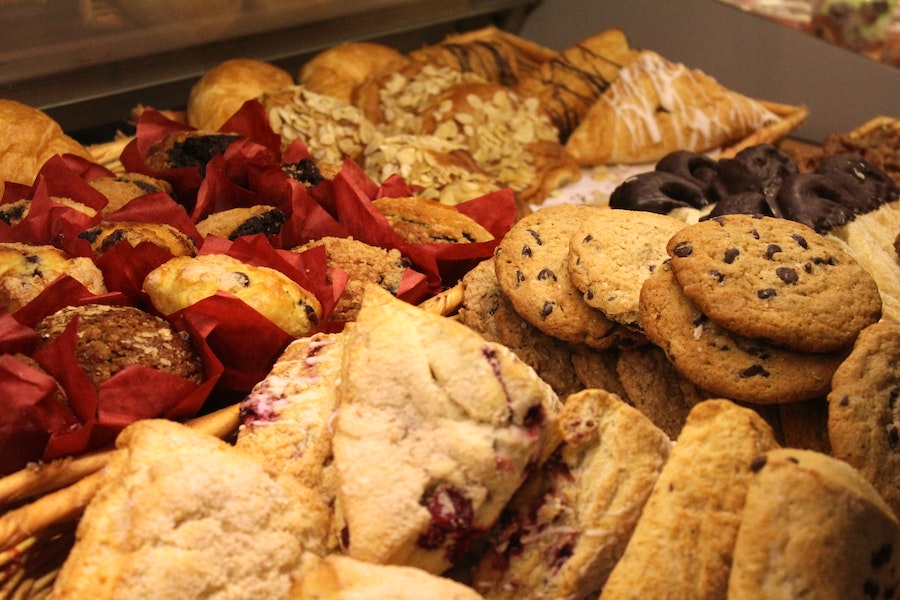Capitalising on the expanding café & bar snacks market
A market untouched by Indian snacks exporters is the café & bar snacks market which is mushrooming all across the western world.
As consumer preferences shift towards convenient and flavorful options to accompany their beverages, businesses in this sector are presented with opportunities to innovate, cater to changing tastes, and meet the growing demand for satisfying on-the-go bites.

Image Source: Pexels
According to a Technavio market research analysis, the Global Cafes and Bars Market size is estimated to grow at a CAGR of 4.81% between 2023 and 2027. The size of the market is forecast to increase by US$ 73.63 billion. The growth of the market depends on several factors, the growth of the cafe industry can be attributed to several factors, including the proliferation of cafes, increasing urbanization, changing consumer lifestyles, and a rise in snacking and indulgence consumption.
Urban youth, in particular, are increasingly inclined towards socializing at cafes, which is expected to further boost the demand for cafes and bars in the forecast period. As per the World Bank Group (WBG), over 56% of the world’s population is expected to reside in metropolitan regions in 2020. This rapid urbanization has resulted in an increase in food service establishments to cater to the growing demand for food and beverage options. Furthermore, the preference for premium coffee and diverse tastes has led to the emergence of speciality cafes. Consumers are seeking unique and bold flavour combinations in their food choices, and this trend is particularly evident among millennials who crave new and exotic foods.
Allied to this market is the vending machine snacks market which too is mushrooming across the world. According to Grandview research, the Europe vending machine market size was valued at US$ 13.71 billion in 2020 and is expected to grow at a compound annual growth rate (CAGR) of 8.9% from 2021 to 2028. Increasing demand for on-the-go snacks and beverages due to the hectic lifestyles of consumers is boosting the demand for vending machines. The continuous rise in the number of coffee consumers in the region is also estimated to drive market growth.
The growing preference for coffee and the expansion of the corporate sector across European countries are further expected to drive product demand. According to the European Vending & Coffee Service Association (EVA), a majority of vending machines in the region serve hot drinks, such as coffee, while the remaining vend anything from sandwiches and cold drinks to hot meals and snacks. These machines can be easily found everywhere as they are a convenient point of sale, equivalent in size to a shop of 1 square meter. Although most machines are located in companies and offices, the rest are placed in various public locations like bus stations, airports, gas stations, train stations, and public libraries.
Till now, Indian snacks are only available at Indian stores in cities populated by the Indian diaspora and some supermarkets like Walmart. However, these are kept in the Indian food section where Indians buy. If these snacks are promoted in stores like Walmart, Maxi etc. these will be noticed & sampled by the non-Indian population too, thereby increasing the number of customers. Indian food is already among the top 10 globally and at a cruise which I went to recently (there were hardly 10% Indian tourists on the cruise), the Indian counter was crowded by non-Indians sampling kebabs, chicken tikka, nan, tandoori chicken, bhindi masala etc. It is apparent that non-Indians are savouring the mildly spiced Indian food. The same interest can be extended to Indian snacks.
Indian exporters should team up with service providers for bar/café as well as vending machines to explore the opportunities available for introducing snacks (farsan) like moong dal, khatta meetha, alu sev, roast peanut variations, banana chips, chakli, chikki, etc. Exporters should prepare a portfolio of about 20 samples and exhibit at Snackex organised by the European Snacks Association, which is the largest trade fair for savoury snacks. Similarly, vending machine trade fairs are held in Italy, Germany etc. where the product portfolio can be displayed.
However, exporters must first understand the economics of vending machine sales. The pricing, pack size, and distribution channels are different than those of supply to supermarkets & stores.
A joint effort by Apeda, snack food associations and exporters will increase the visibility of Indian snacks among the non-Indian population and promote exports to a much larger population than at present.
The author is Suhayl Abidi, Research Advisor, GOG-AMA Centre for International Trade & Consultant, Centre for VUCA Studies, Amity University.













Leave a comment